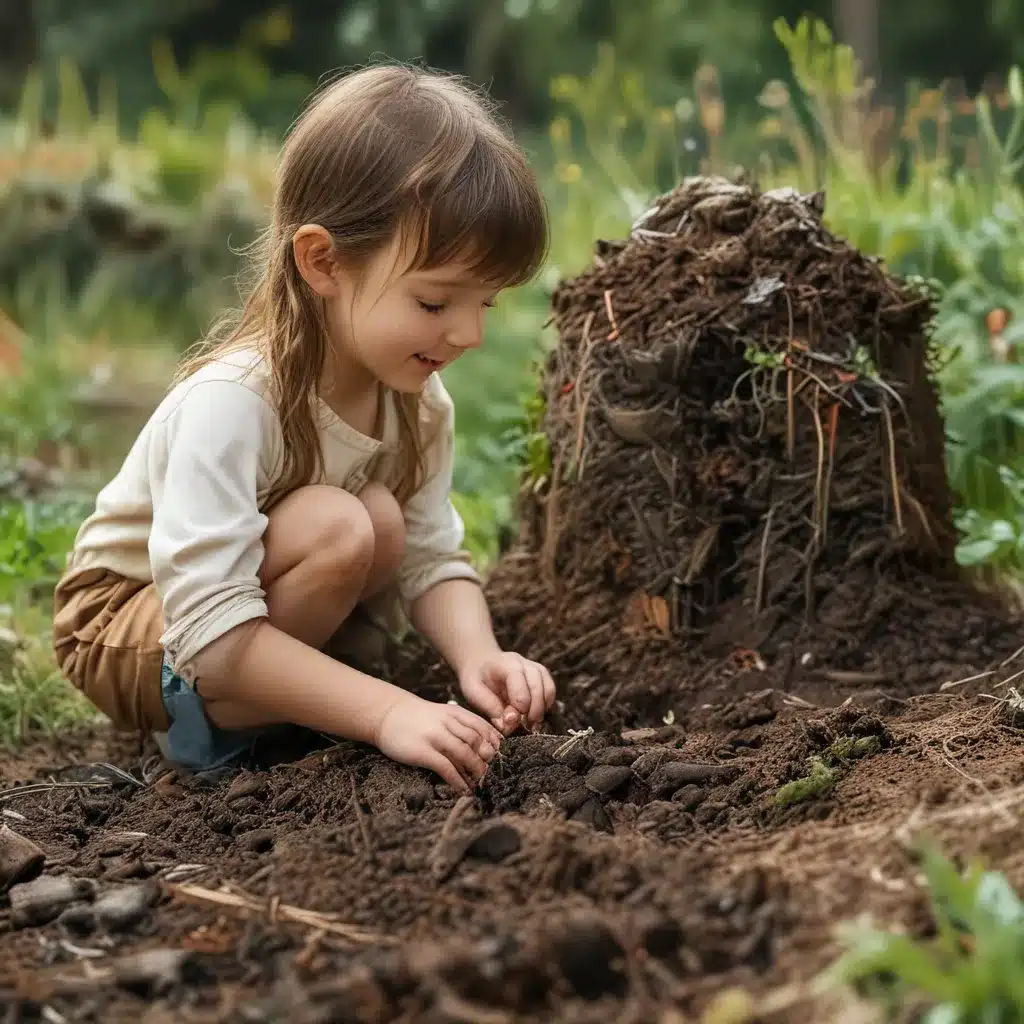
Digging into the Dirt: A Soil Scientist’s Journey
As I kneel down beside the compost pile, my eyes light up with excitement. I’ve always been fascinated by the hidden world beneath our feet – the bustling community of tiny creatures that transform our food scraps and yard waste into rich, nourishing soil. And today, I’m on a mission to share this wonder with a group of curious young minds.
You see, I’m a soil scientist – a detective of the dirt, if you will. My job is to uncover the secrets of the soil, to understand how this complex ecosystem functions and how we can harness its power to grow healthy, vibrant plants. And what better way to do that than by exploring it with the next generation of scientists and nature lovers?
The Harvard Museum of Natural History has invited me to lead a hands-on workshop all about the amazing critters that call the compost bin home. From wiggly worms to busy beetles, we’ll be getting up-close-and-personal with these unsung heroes of the soil.
Dive into the Decomposition Dance
As I reach into the compost, my fingers brush against the decaying leaves and vegetable scraps, and I can’t help but marvel at the intricate dance of decomposition unfolding before me. This is where the magic happens, where the remnants of our everyday lives are transformed into nutrient-rich humus – the very foundation of healthy soil.
Let me introduce you to some of the key players in this incredible process. First up, the humble earthworm. These slithering superstars are nature’s very own plowmen, burrowing through the soil and dragging organic matter down into their tunnels. As they digest this material, they excrete nutrient-packed castings that enrich the soil.
Next, we have the army of microorganisms – bacteria, fungi, and protozoa – that feast on the decomposing matter. These microscopic marvels break down complex compounds into simpler nutrients, making them available for plants to absorb and use. And let’s not forget the arthropods, like beetles and millipedes, that shred and chew their way through the organic debris, speeding up the decomposition process.
The California Academy of Sciences has an incredible interactive exhibit that allows visitors to explore the world of composting up-close. You can even dig into the dirt and observe these incredible creatures in action!
Compost Critters in Action
As I carefully sift through the compost, I’m delighted to see a diverse array of critters scurrying and slithering about. There’s a plump, juicy earthworm, its body rippling as it burrows deeper into the soil. Nearby, a tiny beetle scuttles along, its hard exoskeleton glinting in the light.
I can’t wait to share these fascinating creatures with the children. I know they’ll be just as captivated as I am by the intricate dance of decomposition unfolding before our eyes. We’ll have the chance to get up close and personal with these amazing composters, learning how they transform our food scraps and yard waste into nutrient-rich humus.
The Museum of Life and Science is also celebrating International Compost Awareness Week, and they’ve invited us to join in the festivities. We’ll be exploring the ins and outs of composting, getting our hands dirty, and even starting our own composting journey to take home.
The Soil Food Web: A Delicate Balance
As we dig deeper into the compost, we’ll uncover the intricate web of life that lies beneath the surface. These tiny critters don’t just play a crucial role in breaking down organic matter – they’re the foundation of the entire soil ecosystem.
Think of it like a mini food chain, where each organism depends on the others for survival. The microorganisms feast on the decaying matter, while the larger invertebrates, like worms and beetles, feed on the microbes. And these creatures, in turn, become food for the birds, amphibians, and small mammals that call the soil their home.
It’s a delicate balance, and one that’s essential for maintaining healthy, vibrant soil. When we disrupt this natural cycle by tossing our organic waste into the landfill, we’re depriving the soil of the nutrients it needs to thrive. But by embracing the power of composting, we can close the loop and give back to the Earth what it so generously gives to us.
Compost Critters: A Lesson in Sustainability
As we wrap up our exploration of the compost pile, I can’t help but feel a sense of wonder and gratitude for these unsung heroes of the soil. These tiny creatures, working tirelessly day and night, are the true masters of sustainability – transforming our waste into something truly valuable.
And that’s a lesson I’m eager to share with the children. By learning about the role of compost critters, they’ll gain a deeper appreciation for the natural world and the importance of closing the loop on our waste. They’ll see how their own food scraps and yard trimmings can be turned into nutrient-rich soil, nourishing the plants that feed us and the creatures that call the Earth home.
Plus, Thornnapple CSA is always on the lookout for new ways to engage their community and promote sustainable practices. I can’t wait to share what we’ve discovered today and encourage these young scientists to start their own composting journeys at home.
So, let’s dive in and get our hands dirty! Together, we’ll uncover the wonders of soil science and learn how we can all play a part in building a more sustainable future.



